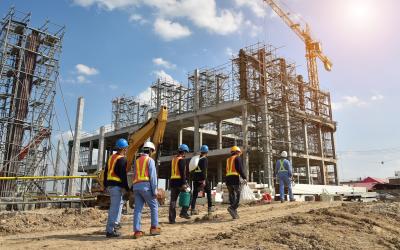Minnesota’s Climate Action Framework centers equity to protect public health in the face of climate change.
As a leader at United Way of Olmsted County, the impact of climate change on the health of Southeastern Minnesotans is top-of-mind for Emily Johnston. “We know that climate change disproportionately impacts people who already experience barriers to good health and health care,” said Johnston. “We’re looking at how we can help impact the intersection of health and climate in a way that centers on those who are most marginalized—those who are impacted by poor health or social determinants of health.”
She’s right – changes in our climate threaten the health of all Minnesotans, but not everyone will experience these impacts equally. Existing inequities based on race, age, gender, geography, economic status, and more place some communities at greater risk. The Healthy Lives and Communities goal of Minnesota’s Climate Action Framework focuses on the steps we can take to ensure all Minnesotans are healthy and safe in the face of climate change, especially those that live in the communities that are most affected.
Climate change has been called the greatest health challenge because it threatens the very basics we depend upon for life, including safe and available drinking water, clean air, and a reliable food supply. Some of the biggest climate-related health impacts include more heat-related illnesses due to extreme heat waves, respiratory and cardiovascular problems from increased wildfire smoke and pollen, and harm to mental health from experiencing extreme weather events, climate-related instability, and other changes.
The framework identifies some priority actions Minnesota must take to achieve our goal of healthy communities…
- Funding and supporting community-led initiatives across Minnesota that address health risks from climate change and improve health outcomes.
- Tracking, monitoring, and compiling a regular report on the health impacts of climate change in diverse populations in Minnesota.
- Providing proactive health services and delivering culturally appropriate, affordable, and responsive healthcare and mental health services to protect public health and create a foundation for climate resiliency.
To understand the impact of our work, the framework also identifies measures of progress for this goal. These include ensuring at least 40% of the benefits of certain state and federal climate investments are in disadvantaged communities and increasing the diversity of state agencies’ leadership to reflect Minnesota’s changing demographics.
However, the scope of this work extends far beyond state government. The framework also identifies opportunities for individuals and other organizations to protect the health of Minnesotans from climate change. For example, local governments can create resiliency hubs to protect residents during extreme weather events and healthcare systems can prepare for extreme weather to ensure a continuation of services in an emergency.
For Johnston and many Minnesotans, this issue hits close to home. “I have a three-and-a-half-year-old. While I may not see climate change impacting her health directly right now, knowing that the climate crisis impacts kids and families all around the world is frightening,” she said. “Knowing that people are coming together to talk about climate and health and how we approach this work across the entire state. That gives me a lot of hope.”
Read more about the Healthy Lives and Communities goal of Minnesota's Climate Action Framework.



